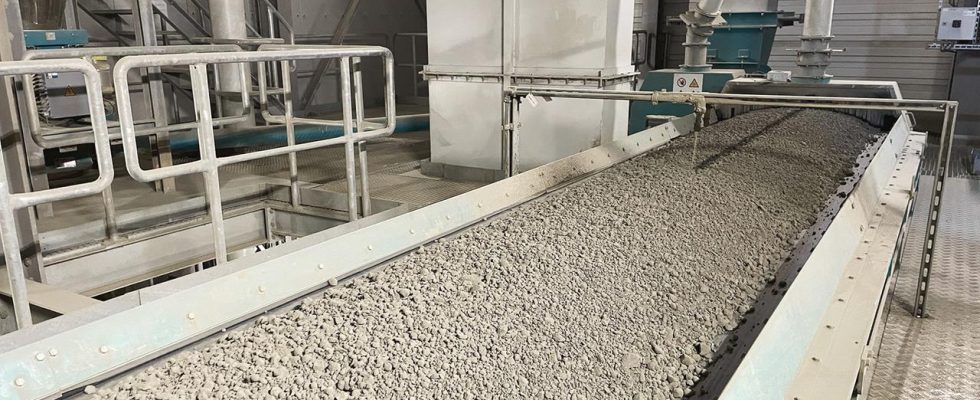background
Cement production releases large amounts of carbon dioxide. According to industry representatives, these emissions cannot be avoided. The CO2 should be captured later.
You can see why the cement industry is finding it so difficult to become climate neutral by looking at the Spenner rotary kiln. The oven is heated to 1600 degrees and is powered primarily by coal. It is therefore not surprising that it consumes a lot of CO2. What is quite surprising, however, is that coal only accounts for a small part of the emissions that arise here in the cement plant.
“Two thirds of the CO2 that we emit comes from the rock that we burn and is therefore unavoidable,” says Dirk Spenner, managing director of the medium-sized cement company from Erwitte in North Rhine-Westphalia.
Underground storage still prohibited
This means that the cement industry has a double climate problem. Like many other sectors of the economy, it must switch to alternative forms of energy. The even bigger challenge, however, lies in the emissions that arise from burning limestone: “We only have the option of capturing and neutralizing the CO2 in the chimney,” says Spenner.
In technical language, the process is called “Carbon Capture and Storage” (CCS). Climate-damaging gas should be captured and ultimately stored underground. In this way, CO2 could be rendered harmless and climate-neutral cement production would be possible.
This does not yet happen in practice. The underground storage of CO2 is controversial in Germany and is currently still effectively banned. However, Federal Minister of Economics Robert Habeck (Greens) is open to the technology and wants to regulate it legally.
Responsible for eight percent of CO2 emissions
The cement industry is currently a huge “climate sinner”. According to figures from the British think tank Chatham House, among others, the industry is responsible for eight percent of global CO2 emissions. In Germany, the focus is primarily on the DAX group Heidelberg Materials (formerly Heidelberg Cement). In an evaluation by the “Handelsblatt” for 2021, the company came in second place in the list of the largest CO2 emitters in the DAX – directly behind the energy giant RWE.
Heidelberg Materials also operates a cement plant in Erwitte/Geseke, i.e. in the region where Spenner’s company is based. There are a total of five plants from different companies here. The two small towns have set themselves the goal of becoming a “climate-neutral cement region”.
Huge amounts of CO2 are released during cement production.
Climate-neutral cement plant planned for 2029
For Erwitte and Geseke, the cement industry is “the decisive economic factor,” says Dirk Brexel, project coordinator for the city of Erwitte. There is correspondingly great interest in supporting the industry in its efforts to become climate neutral. “This is a particularly difficult challenge for companies because there is no climate-neutral off-the-shelf cement plant available today,” says Brexel.
Heidelberg Materials is currently trying to develop such a work itself. It is scheduled to go into operation in Geseke in 2029. The pumped out CO2 is to be liquefied on site and transported by rail to Wilhelmshaven, from where it could then be taken by ship to storage sites in the North Sea.
CO2 via pipeline transport away?
From the point of view of project coordinator Brexel, rail transport can only be an intermediate stage. With 2.5 million tons of CO2 produced annually in the region’s cement plants, this is not practical: “If you were to transport that away by truck, then that would be 100,000 trucks or over 40,000 additional tank cars by rail.” Instead, he proposes a pipeline that could transport the CO2 to northern Germany.
The decarbonization of the cement industry in the region would therefore involve a huge construction project – in addition to the renovation work that would likely occur at each individual plant. According to managing director Spenner, the conversion is so complex that his company does not expect to become completely climate neutral until 2045. In his opinion, the cement is likely to become significantly more expensive as a result of these investments.

